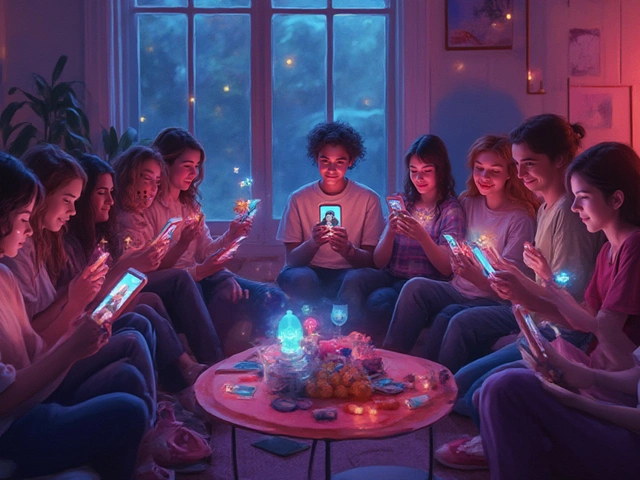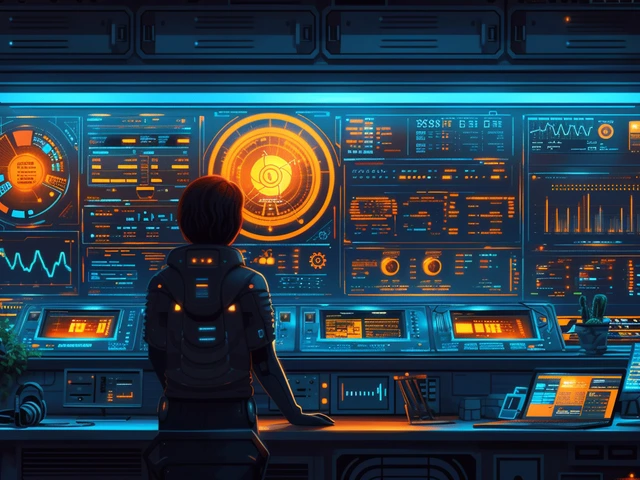Ever feel like your feed is smarter than you remember? It’s not your imagination—something huge is happening behind the scenes. The way we interact online is shifting, and the rise of ChatGPT-powered social media is the engine driving this change. Picture social platforms that answer your questions instantly, draft your replies, and spark conversations you’d never think of—all thanks to artificial intelligence. This isn’t a sci-fi movie or wild speculation. In 2025, over 67% of the top 50 social networks use some form of AI chatbot, and ChatGPT is leading the pack. Whether you’re a casual scroller or a pro content creator, the impact is real. Social media is no longer just a megaphone; it's becoming a dialogue, powered by bots that can listen, learn, and genuinely talk with you. Ready or not, online interaction is entering its most fascinating era yet.
How ChatGPT Is Changing Social Media From the Inside Out
Social media was designed for humans to connect, but honestly, it’s never been more automated than it is now with AI tools like ChatGPT. Scroll through Instagram or X, and you’ll bump into AI-crafted replies, bot-assisted DMs, and smart content recommendations. Here’s what’s really wild: the gap between human and AI responses is shrinking fast. Just last year, a Stanford study found that users rated AI-generated tweets as just as persuasive—and sometimes more likable—than real human posts, especially when the bots used context from the user’s own profile.
So, what’s going on under the hood? ChatGPT doesn’t just spit out canned answers. It learns the tone, interests, and style of users, meaning that your feed gets a lot more personalized. You ask a question in a Facebook group, and the AI not only understands the topic but even pulls in recent news, your interests, and the mood of the group before replying. It’s like having a moderator who never sleeps or loses patience. The technology is everywhere: TikTok creators now draft video captions with it, brands auto-generate product posts, and even businesses use bots to field customer complaints on platforms like WhatsApp and Telegram. A 2025 survey of digital marketers revealed that 82% now rely on AI chatbots to handle first-line interactions—up from just 14% in 2022.
If you’ve got FOMO, don’t worry—you’re in good company. Big influencers are using ChatGPT for brainstorming and responding at scale, helping them build real connections without burning out. But it’s not just about saving time. Genuine creativity is getting a boost: niche meme pages run AI polls to test new concepts, while activists use sophisticated language models to respond to trolls with data-backed, calm replies. Even fan clubs are letting ChatGPT moderate forums, keeping things positive and informative. AI isn’t just in the background—it’s becoming the leader of the online conversation, setting trends and keeping discussions fresh.

Practical Ways to Plug ChatGPT Into Your Social Routine
Alright, enough theory—you want action. How can you harness this on your favorite platforms? Let’s start with automating the stuff you hate: answering repetitive DMs, writing endless captions, or dealing with comment spam. Apps built on top of ChatGPT are everywhere now. Take Jasper or Copy.ai—they give you smart templates for posts, captions, or replies based on what’s trending in your niche. Instagram and LinkedIn even have built-in AI writing coaches powered by language models that help you tweak your voice, sound more authentic, or hit just the right note for a business pitch.
If you’re running a brand, here’s a pro tip—train your ChatGPT bot with customer FAQs and your product catalog. Platforms like ManyChat let you do this with a few clicks, so you can handle 90% of routine customer queries overnight. For creators, the AI doesn’t just help with posting—it suggests hashtags, schedules stories for peak engagement hours, and even sketches scripts for TikTok skits. A 2025 marketing report shocked everyone by showing that posts using AI-generated copy saw a 48% boost in engagement rate compared to manually written posts. People just love how timely and relevant the content feels.
There’s fun stuff, too. On Discord, entire roleplay servers are run by ChatGPT DMs, keeping quests going with custom responses. Reddit mods rely on AI to spot rule-breaking posts faster than any human team could. Even in personal chats, ChatGPT extensions let you auto-summarize long threads or translate posts into your native language instantly. Not sure what to say back to a comment that rubbed you the wrong way? Type in the gist, and the AI drafts a friendly—but firm—reply. It’s never been easier to stay engaged without feeling overwhelmed.
| Social Platform | ChatGPT Use Case | Reported Result (2025) |
|---|---|---|
| Influencer caption writing | 36% faster content creation | |
| Business message drafting | 60% boost in reply rate | |
| Moderation AI bots | 98% spam detection | |
| Discord | Roleplay/game DMs | User retention up by 28% |
Want to future-proof your social feed? Here are some bite-sized tips:
- Use AI tools to schedule, write, and enhance your posts—but always double-check for subtle errors or weird phrasing.
- Set clear boundaries for your AI bots. Make sure your followers know when they’re chatting with a bot, not you personally.
- Experiment! Test AI-generated posts versus manual ones. See which gets better feedback, then lean into what works.
- Watch out for bias: customize your ChatGPT models using YOUR brand voice and fact sources, not just the generic data in the app.
- Regularly audit your AI’s performance—spot issues early before they damage your brand or confuse your followers.

The Future of Human-AI Interaction on Social Media
This is the part that gets people talking: will AI like ChatGPT replace real conversations, or make them better? Experts are split, but the data doesn’t lie. Surveys show 58% of Gen Z users find AI-powered chat tools "helpful" or "fun" for icebreakers, but only 22% think they could fully replace "real" friends or authentic online communities. So it’s not about bots taking over, but about giving people new ways to connect, learn, and express themselves.
Let’s tackle the big concerns. Privacy is a genuine worry. ChatGPT tools can sift through your conversations, pick up on emotional cues, even analyze your shopping habits to suggest new connections or ads. Social networks like Meta and ByteDance have started rolling out transparent disclosure tools, making it easier to tell when you’re interacting with a bot. In 2025, European Union regulations require all AI-generated posts to be labeled, much like sponsored posts are today. That way, users can choose how much bot interaction they want in their feeds.
The benefits keep getting better. AI now helps users with disabilities access content—auto-captioning audio posts, suggesting simpler text for those with cognitive loads, or translating trending memes into sign language GIFs. Lonely? Some platforms test bots as "digital companions" that can check in on your mental health or just offer a friendly chat. But there’s a limit—people still crave authenticity, and social trust matters. So the secret sauce? Blending AI-assisted speed with genuine, human creativity.
In this new landscape, your next viral post might be partly written by an algorithm and partly by hand. That’s not a bad thing. The future isn’t man versus machine—it’s humans and AI co-creating, solving, and connecting in ways never possible before. Expect more platforms to open up bot plug-ins, let users train their own ChatGPT personalities, and offer voice-to-AI-text so anyone, anywhere can join the conversation hands-free. The playing field is about to get a whole lot wider, and smarter.
Don’t just scroll past AI—adapt and ride the wave. Learning to work with ChatGPT on social media could be your secret edge, whether you’re building a personal brand, running a business, or just looking for smarter, more enjoyable interactions. The revolution is already here, and you’ve got a front-row seat.





